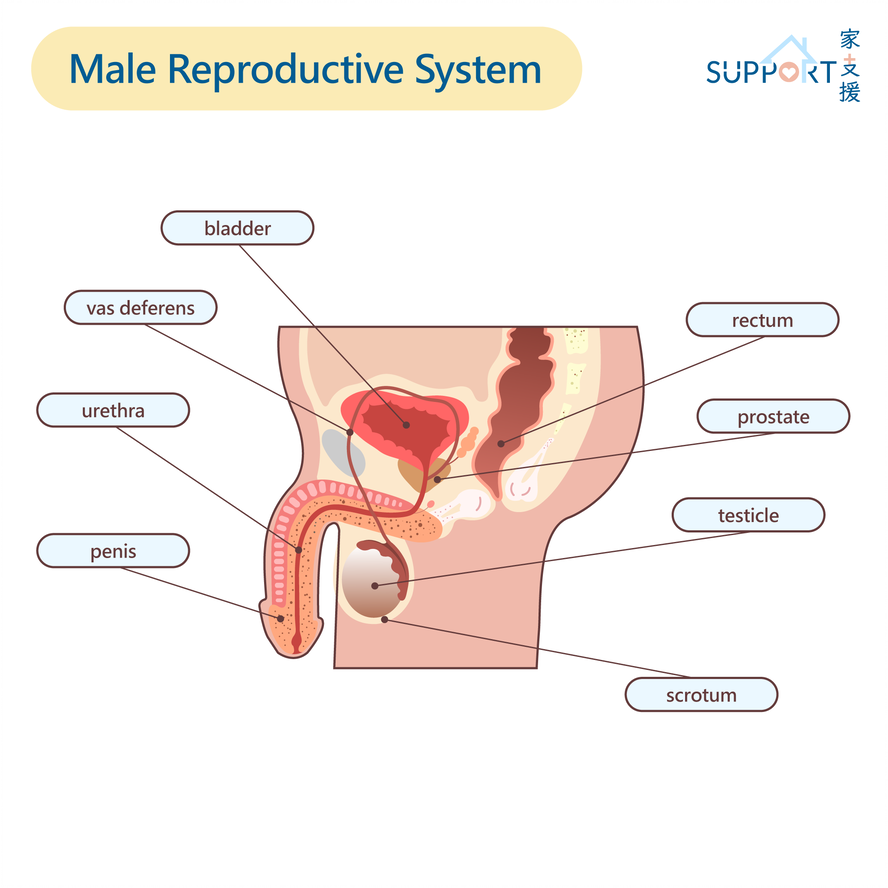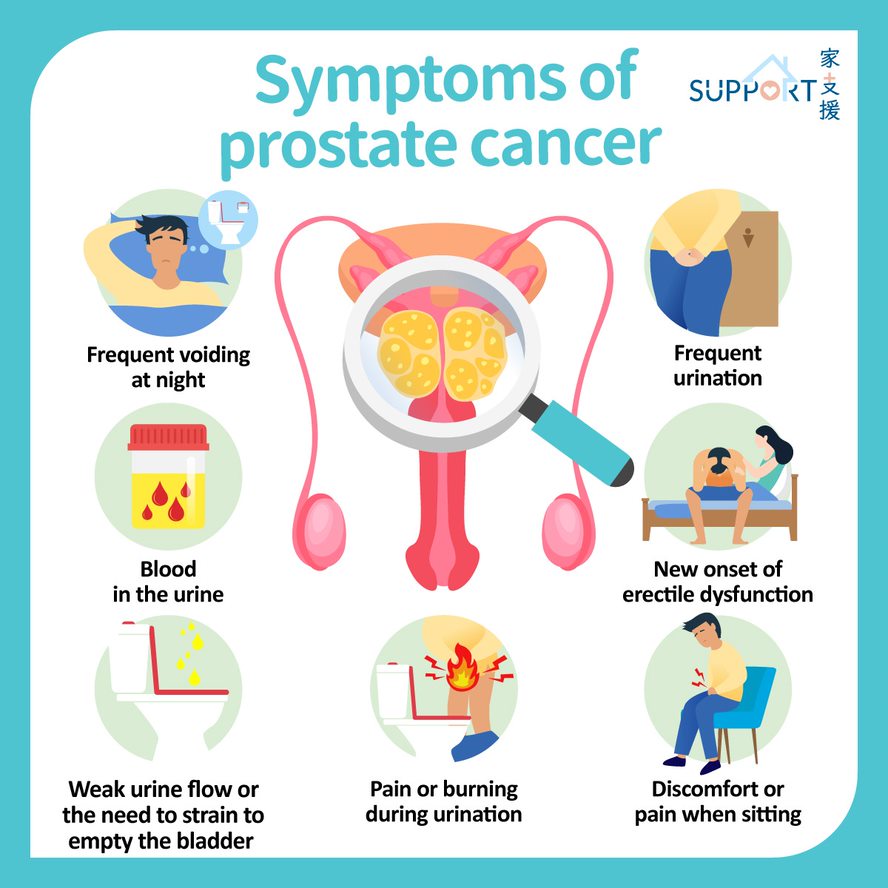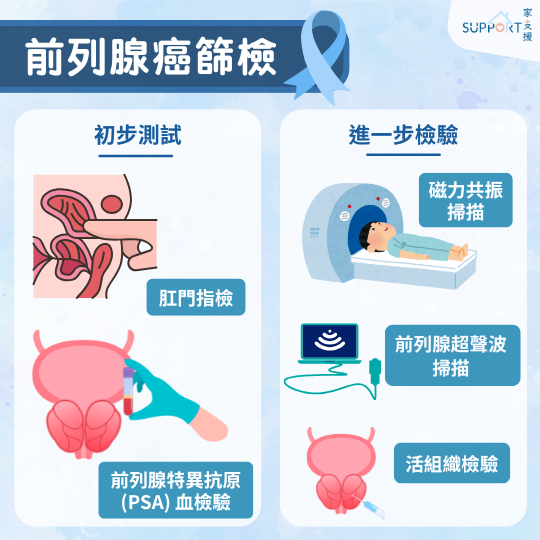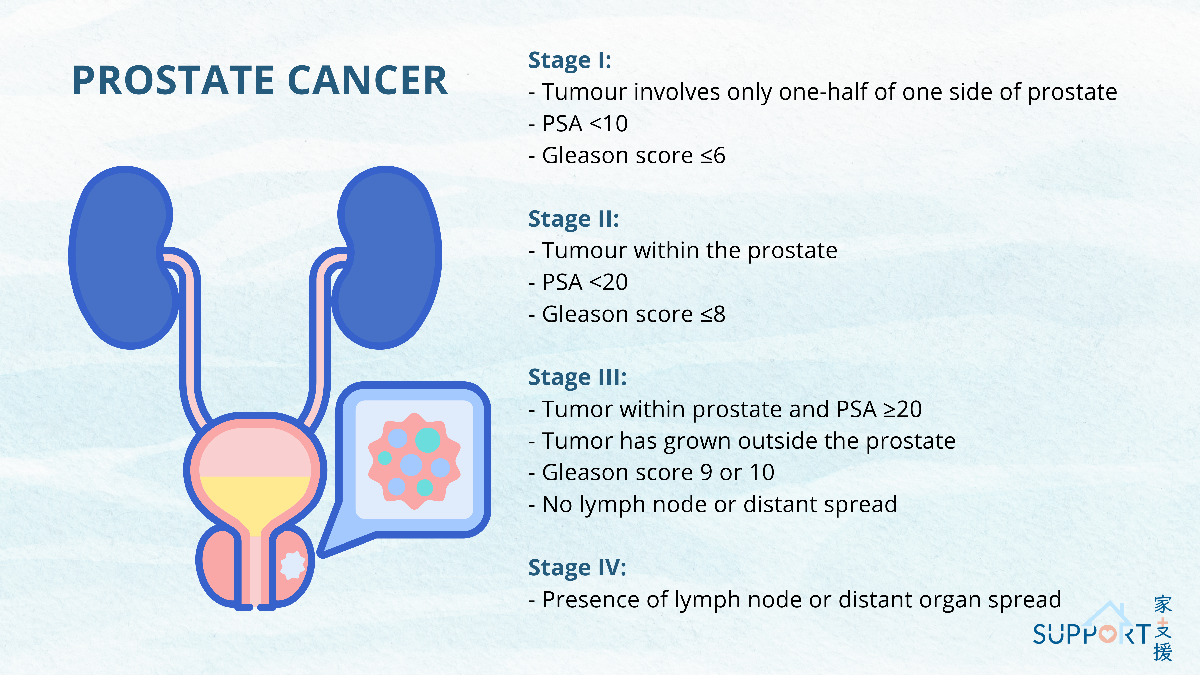Hormonal therapy
- Prostate cancer cells use androgens to grow. An androgen is a type of hormone that controls the development of male physical traits, such as deep voices and growth of bodily hair. The most common androgen is testosterone, primarily produced by the testicles. The adrenal glands and prostate cancer cells can also produce androgens.
- Hormonal therapy is used to lower testosterone levels in the body, either by surgically removing the testicles, or by taking drugs that disable the functions of the testicles. As a result, prostate cancer shrinks or grow more slowly for a time.
Types of hormonal therapy include:
1. Bilateral orchiectomy
- Bilateral orchiectomy is the surgical removal of both testicles, which are the main source of testosterone production.
- The effects of this surgery are permanent and cannot be reversed.
2. Luteinising hormone-releasing hormone (LHRH) agonists
- LHRH (also called gonadotropin-releasing hormone, or GnRH) is produced by an area of the brain called the hypothalamus. This hormone stimulates the pituitary gland to produce luteinising hormone (LH), which in turn stimulates the testicles to produce testosterone.
- LHRH agonists (also called GnRH agonists) are drugs that cause the pituitary gland to produce extra LH. Eventually the pituitary gland stops responding to the LHRH agonist and the pituitary stops releasing LH. As a result, the testicles stop producing testosterone. The lowered amount of testosterone then slows the growth of prostate cancer cells (known as chemical castration or medical castration).
- Administration: usually by injection under skin or into muscle once every one to six months
- When the patient takes LHRH agonists for the first time, there may be a temporary rise in testosterone that lasts for about a week, known as a tumour flare reaction. It may cause symptoms to worsen for a few weeks. The doctor will likely prescribe another type of hormonal therapy called an anti-androgen to help prevent a tumour flare reaction. Anti-androgens are usually started at the same time as LHRH agonists and are taken for a few weeks.
- For example (trade names are in brackets): leuprorelin (Enantone), goserelin (Zoladex), triptorelin (Decapeptyl)
3. LHRH antagonists
- LHRH antagonists (also called GnRH antagonists) are drugs that stop the pituitary gland from producing LH. This causes the testicles to stop producing testosterone, which slows the growth of prostate cancer cells.
- LHRH antagonists usually lower testosterone levels more quickly than LHRH agonists. They also do not cause a tumour flare reaction.
- Administration: monthly injection under skin
- For example: degarelix (trade name: Firmagon)
Prostate cancer that is controlled by maintaining low levels of testosterone, i.e. castration is known as “hormone-sensitive prostate cancer (HSPC)” or “castrationsensitive prostate cancer (CSPC)”. Castration can be attained with bilateral orchiectomy, LHRH agonists, or LHRH antagonists which are collectively known as “androgen deprivation therapy (ADT)”.
However, the cancer eventually learns how to survive at low levels of testosterone, which makes it unaffected by hormonal therapy. This is called “hormonal-resistant prostate cancer (HRPC)” or “castration-resistant prostate cancer (CRPC)”.
4. Androgen receptor pathway inhibitors (ARPIs) / Anti-androgens / Androgen receptor antagonists
- ARPIs block the action of androgens. They attach to androgen receptors on prostate cancer cells and prevent them from using testosterone to grow.
- ARPIs are used in combination with ADT (i.e. orchiectomy or an LHRH agonist or antagonist) in at different stages of prostate cancer from recurrence after primary treatment to metastatic castration-resistant prostate cancer.
- First-generation ARPIs are given for a few weeks when an LHRH agonist is first started to help prevent tumour flare.
- Administration: orally once to thrice daily
- For examples (trade names are in brackets):
- First-generation ARPIs: flutamide, bicalutamide (Casodex)
- Second-generation ARPIs: enzalutamide (Xtandi), apalutamide (Erleda), darolutamide (Nubeqa)
5. Androgen synthesis inhibitors
- Although the testicles produce most of the body's testosterone, other cells in the body can still make small amounts of the hormone that may drive cancer growth. These include the adrenal glands and some prostate cancer cells. Androgen synthesis inhibitors stop these cells from making testosterone.
- Abiraterone is used in combination with ADT (i.e. orchiectomy or an LHRH agonist or antagonist) in prostate cancers which are localised high-risk, locally advanced, and metastatic.
- Administration: orally once daily with low-dose prednisolone to avoid side effects
- For example: abiraterone acetate (trade name: Zytiga)
Side effects of hormonal therapy include:
- Erectile dysfunction
- Loss of sexual desire
- Hot flashes with sweating
- Gynecomastia, which is growth of breast tissue that sometimes can lead to discomfort
- Depression
- Cognitive dysfunction and memory loss
- Heart problems and heart disease
- Weight gain
- Loss of muscle mass
- Osteopenia or osteoporosis, which is the thinning of bones
Other treatment approaches:
Chemotherapy
- For example (trade names in brackets): docetaxel (Taxotere), cabazitaxel (Jevtana), carboplatin, cisplatin, etoposide, mitoxantrone
- Chemotherapy is a systemic therapy administered through intravenous route, often in combination with a low-dose oral steroid drug. This means that the drugs travel through the bloodstream to reach and destroy cancer cells all over the body, including those that may have broken away from the primary tumour in the prostate.
- Side effects of chemotherapy include:
- Nausea and vomiting
- Diarrhea
- Low blood cell counts (called bone marrow suppression)
- Increased chance of infections
- Easy bruising or bleeding
- Fatigue
- Hair loss
- Sore mouth and throat
- Loss of appetite
Radioisotope therapy
1. Radium-223
- Trade name: Xofigo
- Radium-223 delivers radioactive particles directly to damaged bones (like those containing cancer spread), giving off radiation that kills cancer cells. It is suitable for selected patients with bone metastases only. It helps relieve pain caused by bone metastases.
- Administration: via intravenous route once every four weeks for up to six doses
- Side effects: decrease in blood cell counts, which could increase risks for infections or bleeding
2. Lutetium Lu 177 vipivotide tetraxetan / 177Lu-PSMA-617
- Trade name: Pluvicto
- Lutetium Lu 177 vipivotide tetraxetan can be considered in metastatic castration-resistant prostate cancer patients who have already been treated with hormonal therapy and chemotherapy. The cancer cells must also have the prostate-specific membrane antigen (PSMA) protein, visualised under a PSMA PET scan.
- Administration: via intravenous route once every six weeks for up to six doses
- Side effects: feeling tired, dry mouth, nausea, loss of appetite, constipation, decrease in blood cell counts, which could increase risks for infections or bleeding
Treatments for painful bone metastases
1. External radiation therapy
- Can be used for relieving pain in cancer that spreads to the bones.
- Usually given in one to ten fractions.
- Some patients may experience increased pain after 4-5 fractions of radiotherapy but it usually subsides in one to two weeks.
2. Radium-223
- Mentioned under “Radioisotope therapy”
3. Antiresorptive agents
- For example (trade names in backets): zoledronic acid (Zometa), denosumab (Xgeva, Prolia)
- Antiresorptive agents help slow the growth of cancer that has spread to the bone and help delay or prevent fractures. They also help strengthening bones in men who are receiving hormonal therapy.
- Side effects: flu-like symptoms, bone or joint pain, nausea, diarrhoea, feeling weak or tired
- Rare but serious side effect: osteonecrosis of jaw
- Administration: via intravenous route once every three or four weeks, or under the skin once every six months
4. Surgery
- Verteoplasty is a minor surgery to stabilise a painful collapsed bone in a spine weakened by prostate cancer. During this procedure, a small incision is made in the middle of the back, and a balloon is placed into the weak spinal bone. The balloon is first filled with air and then a cement-like mixture (which will harden) to stabilise the bone and spine.
Targeted therapy
- For example: poly(ADP)-ribose polymerase (PARP) inhibitors like olaparib (Lynparza), talazoparib (Talzenna), niraparib (Zejula)
- PARP inhibitors block the PARP proteins, making it very hard for tumour cells with an abnormal DNA repair gene to repair their damaged DNA, which often leads to death of these cells. Therefore, PARP inhibitors are only likely to be helpful if the cancer cells express mutations in one of the DNA repair genes i.e. homologous recombination repair (HRR)) genes, such as BRCA1 or BRCA2 genes
- PARP inhibitors in combination with hormonal therapy (abiraterone or enzalutamide) can be considered for patients with metastatic castration-resistant prostate cancer (mCRPC) with DNA repair gene defects, such as BRCA1, BRCA2.
- Common side effects include fatigue, nausea and vomiting, headaches, diarrhoea, decreased appetite, hair loss and low blood counts.
- Administration: taken orally, once or twice daily
Immunotherapy
- For example: pembrolizumab (trade name: Keytruda)
- Pembrolizumab can be used in mCRPC patients if the cancer cells have high level of microsatellite instability (MSI-H) or a defect in mismatch repair gene (dMMR) or high tumour mutational burden (TMB-H)
- Side effects: fatigue, cough, nausea, itching, skin rash, decreased appetite, constipation, joint pain, and diarrhea
- Less common serious side effects: infusion reactions (fever, chills, flushing of the face, rash, itchy skin, feeling dizzy, wheezing, and trouble breathing), autoimmune reactions (problems in the lungs, intestines, liver, hormonemaking glands, kidneys, or other organs)
- Administration: given intravenously, once every three to six weeks









